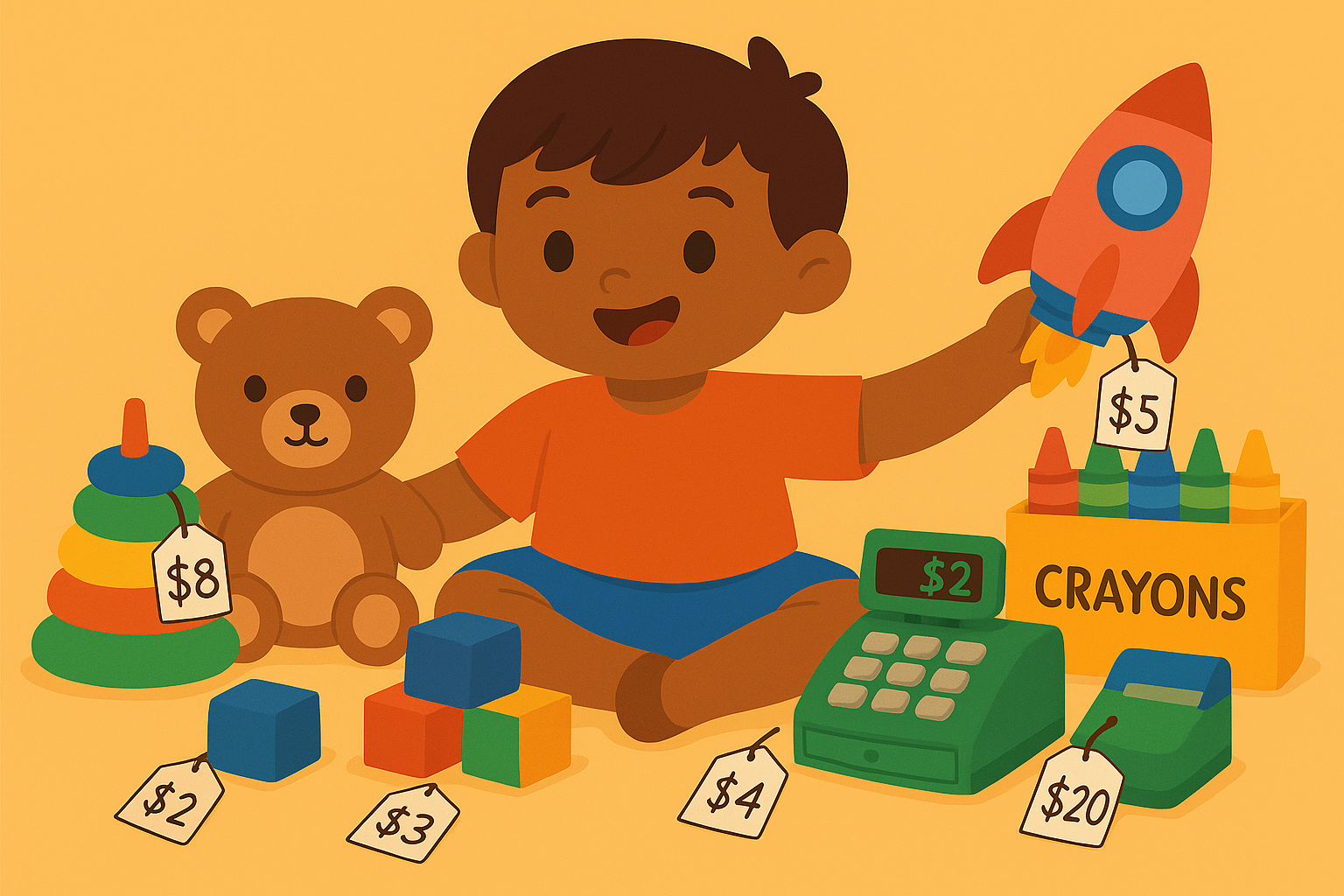Playing shop is a classic childhood activity that’s packed with learning opportunities. By setting up an imaginary store at home, children can practise counting, communication, and turn-taking—all while having heaps of fun with their toys and imagination.
Whether you’re running a fruit stall, toy shop, bookshop or café, this type of role-play encourages creativity, independence, and early maths and literacy skills in a playful setting.
Materials Needed
- Toys, books, clothes, or pretend groceries to “sell”
- Play money, real coins, or homemade paper money
- Shopping bag or basket
- Optional: till or calculator, signs, price tags
Tools Needed
- Paper and pens (for signs or receipts)
- Optional: table or boxes to display items
Steps
- Choose a Theme
Decide what kind of shop to run—groceries, toys, books, or a mini café. - Set Up the Store
Lay out your items, add price tags, and label sections using signs. - Assign Roles
One person can be the shopkeeper, another the customer. Take turns at the till! - Start Shopping
Use money to “buy” items, practise asking for help, and talk through the shopping experience. - Mix It Up
Swap roles, rearrange the shop, or change to a different kind of business next time!
Variations
Maths Focus: Add prices and challenge older children to total up purchases and give change.
Restaurant or Café: Take food orders, write a menu, and serve pretend meals.
Bookshop: Recommend and “sell” books to family members.
Market Stall: Set up outdoors with fruit, veg, or toys on a picnic blanket.


Leave a Reply